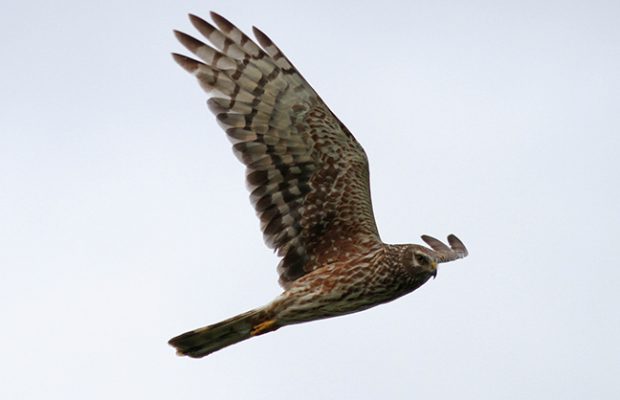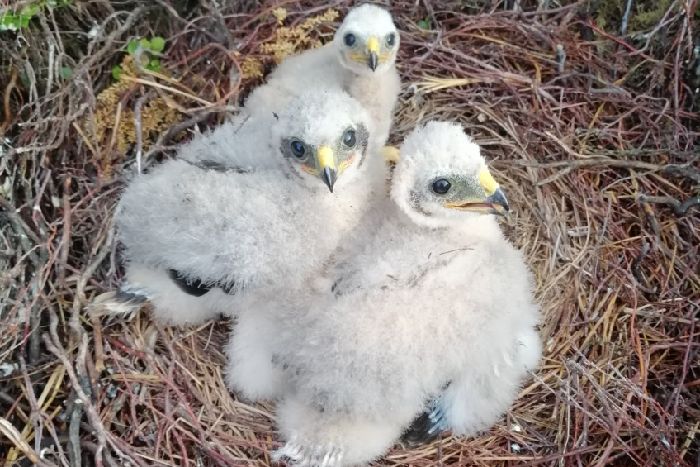- Home
- News
- What’s On
- Activities for Children
- Arts & Crafts
- Autos and Bikes
- Business events
- Car Boot & Auctions
- Charity events
- Churches & Religious
- Comedy
- Dance
- Days out & Local interest
- Education
- Exhibition
- Film
- Gardening & Horticulture
- Health
- Markets & Fairs
- Music
- Nature & Environment
- Spiritual
- Sport
- Talks and Discussions
- Theatre and Drama
- Business
- Local Information
- Jobs
- Deaths
- Charity events
- Contact Us
Hen harriers breeding again in the Peak District

Two swallows don’t make a spring but having hen harriers, one of Britain’s most threatened birds, breeding for the second year running on the National Trust’s High Peak Moors in the Peak District National Park is something to celebrate.
The hen harrier is one of the most special birds of the British uplands and is famed for the adult’s mesmerising and dramatic ‘sky dance’, which the male performs as it seeks to attract a female.
Jon Stewart, the National Trust’s General Manager for the Peak District said: “We’re delighted to learn of this nest. The hen harrier has been one of the most persecuted birds of prey in Britain for many years and we have set out on a mission to work with others to create the conditions for the harrier and other birds of prey to thrive once again in the uplands. We hope this will be a positive model for improving the fate of our birds of prey and providing the healthy natural environment that so many people care about and want to see”.

In 2013 the National Trust published its High Peak Moors Vision, which put at its heart restoring wildlife, including birds of prey, and involving people in the care of the moors. Since then harriers have bred in 2014, 2018 and now 2019.
The conservation charity leases much of its High Peak moorland for grouse shooting and all shooting tenants have signed up to actively supporting the Vision. Over the last few years as well as the hen harrier, there has been breeding success for other species in and around the National Trust’s moors such as the peregrine falcon, merlin, buzzard, goshawk and short eared owl.
“It is critical the birds are now given the space and security to rear their young without the threat of disturbance or worse.” Jon continued.
“The National Trust will be working with its partners such as the Peak District Raptor Monitoring Group, Natural England and tenants to give the birds the best chance of success. We also plan on working with the RSPB to fit satellite tags to the young so that we can monitor their movements and learn more to inform the conservation of this very special bird. There is a great sense from everyone closely involved that we want this to work not just for these birds now, but as a symbol for the whole future direction of our uplands. Sadly last year two satellite tagged young, named Arthur and Octavia, raised on the High Peak Moors stopped transmitting suddenly, not long after they had left National Trust land. This illustrates how fragile any recovery of hen harriers is. We want to see uplands richer in wildlife and beauty, widely enjoyed and providing huge public benefits. For this to be a reality we need to see birds returning in following years to breed. For now we will concentrate on working with others to make this breeding attempt a success.”
Sarah Fowler, chief executive of the Peak District National Park said: “It’s extremely heartening to hear of a second successive year of hen harrier breeding in the Peak District National Park. This is an iconic bird of our uplands whose status remains precarious and this nest, like any hen harrier family in England, is to be celebrated. This news demonstrates that landowners, gamekeepers and conservationists can work collaboratively to secure positive results for birds of prey, and this is a model that can be harnessed across the wider Peak District where hard work remains to see bird of prey numbers back to where they should be. It’s now critical these young harriers are given the best possible opportunity to fledge safely and explore beyond their territory unhindered, to help us build a foundation for hen harriers and other raptors that future generations may enjoy.”

You must be logged in to post a comment Login